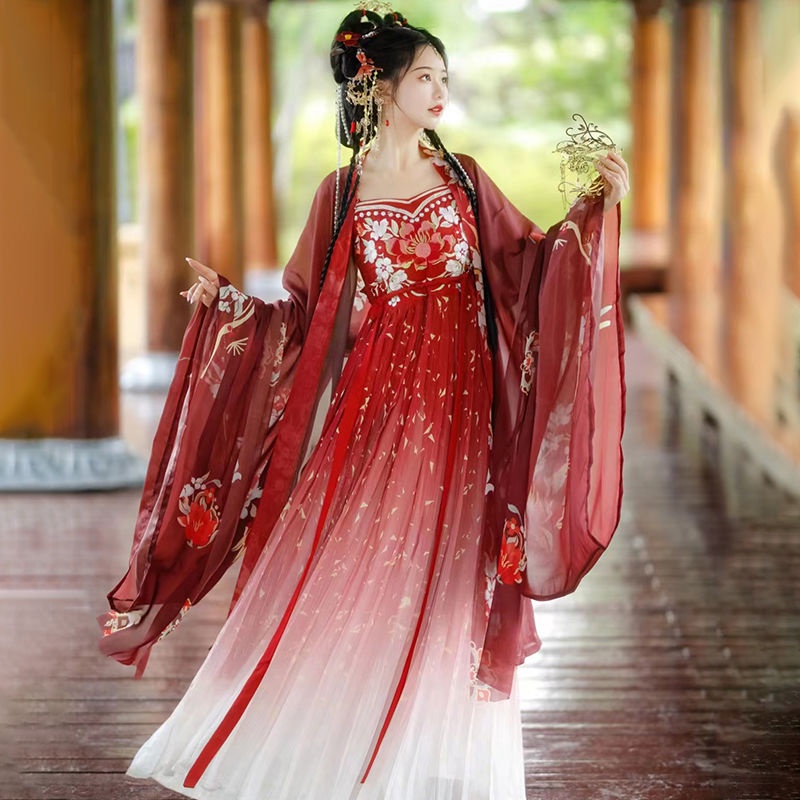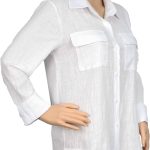Chinese Hanfu, a traditional form of clothing, has experienced a resurgence in recent years, showcasing its unique cultural heritage and influencing modern fashion trends. In this article, we will delve into the world of Chinese Hanfu, exploring its historical significance, contemporary popularity, intricate designs, cultural impact, and its role in reviving traditional craftsmanship and promoting cultural pride. Join us as we uncover the beauty and allure of Chinese Hanfu, a fashion statement that bridges the past and the present.
I. Unveiling the Historical Significance of Chinese Hanfu
1.1 Origin and Evolution
Chinese Hanfu has a rich history that dates back thousands of years. Its origin can be traced to the Xia and Shang Dynasties, and it reached its pinnacle during the Han Dynasty. Hanfu reflects the diverse clothing styles and aesthetics that evolved throughout China’s dynastic eras, each period leaving its unique imprint on the design and form of the attire.
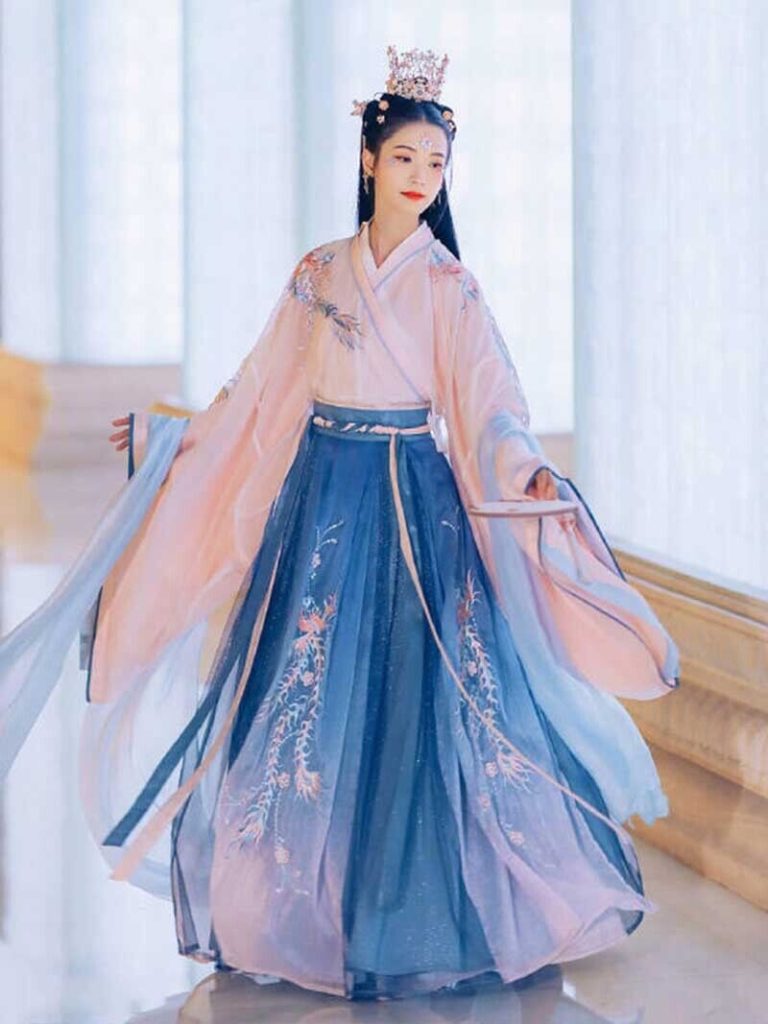
1.2 Symbolism and Cultural Identity
Hanfu carries deep cultural significance and serves as a symbol of Chinese identity and heritage. The intricate details and patterns of Hanfu often reflect the wearer’s social status, marital status, and regional customs. Moreover, Hanfu represents an embodiment of traditional values, etiquette, and respect for cultural heritage, fostering a sense of pride and connection with Chinese history.
II. The Modern Revival: Chinese Hanfu in Contemporary Fashion
2.1 Growing Popularity and Influence
In recent years, Chinese Hanfu has experienced a revival, with a growing number of individuals embracing it as a fashionable and cultural statement. Hanfu has transcended its traditional significance, influencing modern fashion trends both domestically and internationally. The revival of Chinese Hanfu has sparked a movement among young people to rediscover and celebrate their cultural roots, reclaiming their identity through this unique form of clothing.
2.2 Adaptation and Innovation
The resurgence of Chinese Hanfu has seen adaptations and innovations that blend traditional elements with modern fashion aesthetics. Designers are incorporating contemporary elements, such as different fabrics, colors, and silhouettes, while maintaining the essence and authenticity of Hanfu. This fusion of tradition and modernity allows for broader accessibility and acceptance among a diverse range of fashion enthusiasts, ensuring the sustainability and relevance of Hanfu in the modern world.
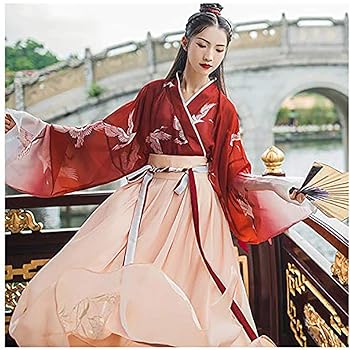
III. Intricate Designs: Masterful Craftsmanship and Artistry
3.1 Traditional Techniques and Embroidery
Chinese Hanfu is renowned for its exquisite craftsmanship, showcased through the art of embroidery. This centuries-old technique involves skilled artisans who meticulously create intricate designs using silk threads and masterful needlework. With utmost precision and attention to detail, these artisans bring the embroidery to life, transforming each Hanfu garment into a work of art.
Embroidery in Hanfu often displays a range of symbols, motifs, and patterns that hold cultural significance. From auspicious symbols representing luck and prosperity to intricate floral designs inspired by nature, the embroidery tells stories and conveys the wearer’s social status or personal preferences. It requires not only technical skill but also an understanding of the cultural and historical context behind the designs.
The artistry involved in Hanfu embroidery extends beyond its aesthetic appeal. It serves as a testament to the dedication and passion of these artisans, who carry forward a tradition that has been passed down through generations. The mastery of different stitching techniques, color choices, and thread thicknesses adds depth, texture, and three-dimensionality to the designs, enhancing the overall visual impact of the garment.

3.2 Regional Diversity and Style
Chinese Hanfu embodies a remarkable diversity of regional styles and variations. Each region in China has contributed its unique customs, climate, and aesthetic preferences to the development of Hanfu. Regional variations in design, fabric choices, and construction techniques provide a visual tapestry of China’s rich sartorial heritage.
From the flowing lines of the Han Dynasty’s Daopao to the voluminous sleeves of the Tang Dynasty’s Ruqun, each regional style of Hanfu carries a distinct visual identity and cultural representation. These variations offer a glimpse into the diverse historical influences and regional characteristics that have shaped China’s clothing traditions.
The distinct features of regional Hanfu styles often reflect the practical considerations of their respective regions. Garments designed for warmer climates, for example, may feature lighter fabrics and more breathable designs. While those designed for colder regions may have additional layers or thicker materials to provide warmth. Traditional craftsmanship specific to each region is often passed down through generations, contributing to the uniqueness and authenticity of regional Hanfu styles.
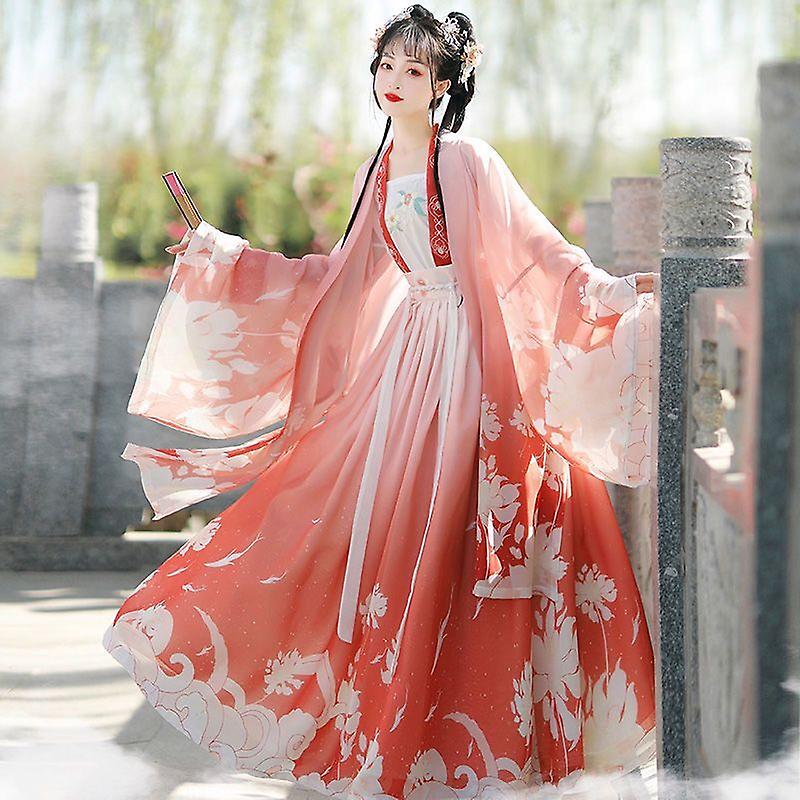
IV. Cultural Impact: Fostering Pride and Cultural Exchange
4.1 Revitalizing Traditional Crafts
Therefore, The resurgence of Chinese Hanfu has breathed new life into traditional crafts and artistic skills that were at risk of being forgotten. The demand for Hanfu has created opportunities for skilled craftsmen. From weavers and embroiderers to tailors and accessories makers, to showcase their talents and carry forward ancestral craftsmanship. This revival has contributed to the preservation and revitalization of China’s rich heritage of textile arts and craftsmanship.
4.2 Cultural Exchange and Awareness
Chinese Hanfu has become a medium for cultural exchange and dialogue. Its popularity has transcended borders, attracting international attention and promoting cultural understanding. Through events, exhibitions, and social media platforms. The beauty and history of Hanfu are shared with a global audience. Fostering cross-cultural appreciation and promoting a deeper understanding of China’s diverse cultural traditions.
V. Beyond Fashion: Chinese Hanfu as a Lifestyle and Community
5.1 Embracing Traditional Values and Etiquette
Moreover, Wearing Chinese Hanfu is more than just putting on a set of clothes; it represents a lifestyle that embraces traditional values and etiquette. Donning Hanfu encourages individuals to embody the grace, modesty, and respect for others that were highly regarded in ancient Chinese society. This cultural revival serves as a reminder and a bridge to the past, reinforcing the importance of traditional values in contemporary life.
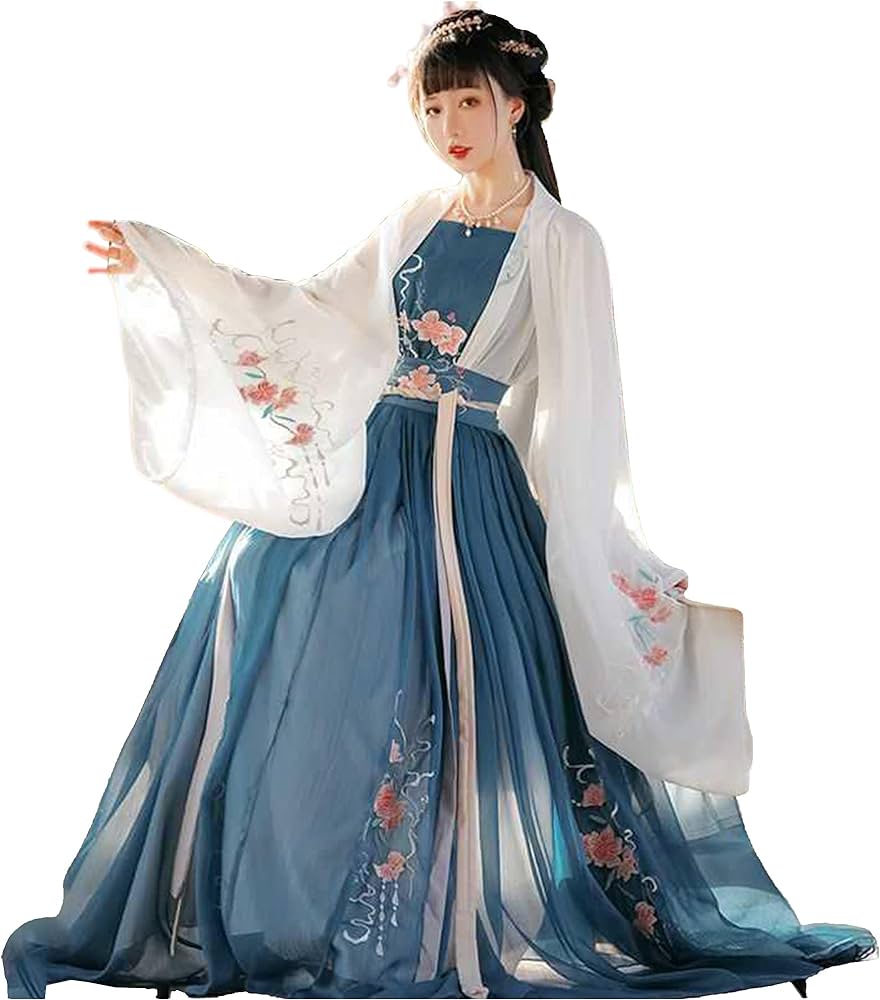
5.2 Building a Community and Sense of Belonging
Furthermore, the popularity of Chinese Hanfu has created a sense of community among enthusiasts, fostering a strong bond and a shared passion for the clothing and its cultural significance. This community of Hanfu enthusiasts organizes gatherings, events, and online forums. Providing platforms for individuals to connect, share knowledge, and celebrate their love for Hanfu.
Chinese Hanfu, a Cultural and Fashion Renaissance
In conclusion, the resurgence of Chinese Hanfu represents both a cultural and fashion renaissance, as it revives ancient traditions in a modern context. Finally, Hanfu serves as a symbol of cultural identity, bridging the gap between the past and the present. Its intricate designs, masterful craftsmanship. And artistic expressions captivate fashion enthusiasts worldwide while fostering cultural pride and preserving China’s rich heritage. Chinese Hanfu is more than just a fashion statement. It represents a timeless cultural legacy that continues to inspire and captivate generations.
